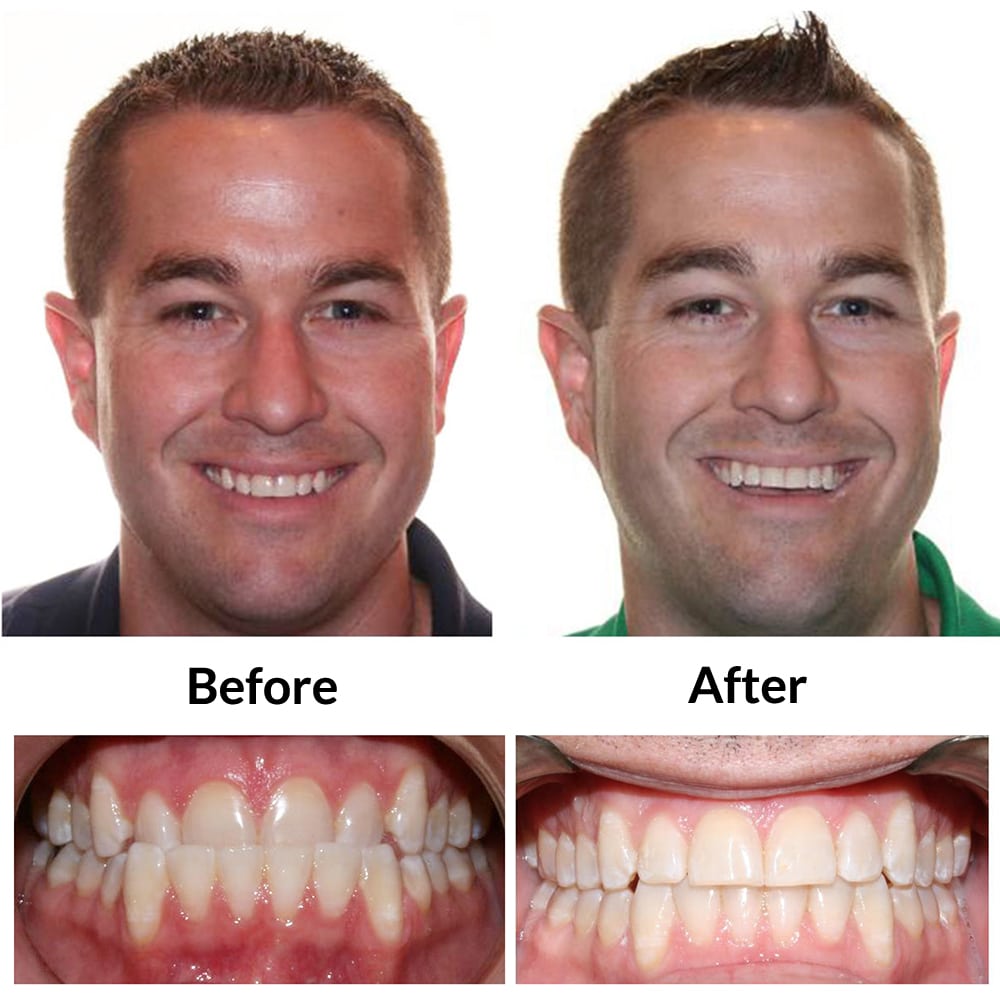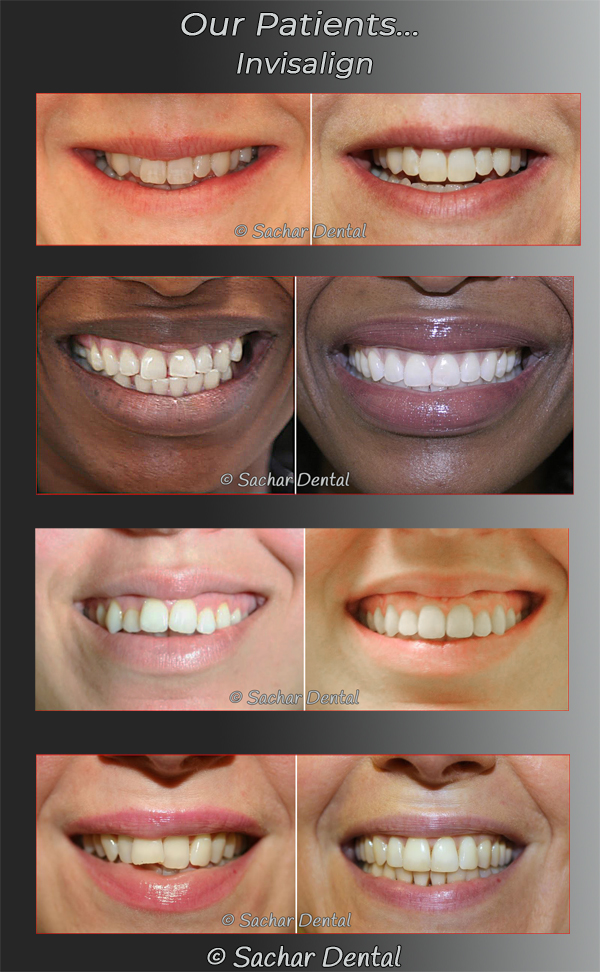Discover the Perks of Invisalign for a Perfect Smile Transformation
Discover the Perks of Invisalign for a Perfect Smile Transformation
Blog Article
Invisalign vs. Traditional Braces: Which Option Is Right for You?
When considering orthodontic treatment, the choice in between Invisalign and typical dental braces offers numerous important elements that warrant mindful evaluation. Invisalign offers a very discreet choice with detachable aligners, while typical dental braces offer an extra visible yet effective remedy for extreme misalignment.
Review of Therapy Choices

On the other hand, traditional braces contain steel brackets and wires that are bound to the teeth. This technique applies continual pressure gradually to accomplish positioning. While reliable for complicated orthodontic problems, traditional braces call for normal check outs for modifications and can position obstacles in preserving oral health as a result of the problem of cleaning around braces and cords.
Both alternatives have their values, and the option frequently hinges on certain oral problems, lifestyle preferences, and patient conformity. Eventually, speaking with an orthodontic specialist is vital for determining one of the most ideal therapy strategy tailored to specific requirements. Understanding the nuances of each choice can considerably influence the total success of orthodontic treatment.
Visual Factors To Consider
A considerable variable influencing the selection in between Invisalign and traditional dental braces is the aesthetic appeal each therapy offers. Invisalign aligners are crafted from clear plastic, making them essentially unseen when put on.
On the other hand, typical dental braces consist of steel braces and cables, which can be extra visible. While advancements in orthodontic technology have led to the advancement of smaller sized braces and colored elastics, traditional braces still keep an even more conspicuous profile. For some people, the visibility of braces might hinder them from seeking needed treatment.
Eventually, the option in between Invisalign and typical dental braces might hinge on personal preferences pertaining to aesthetics. Individuals that prioritize discernment usually lean towards Invisalign, while those that are much less worried about visibility may choose typical dental braces. Recognizing the aesthetic ramifications of each alternative is vital for making a notified choice that aligns with one's lifestyle and choices.
Convenience and Convenience

In terms of comfort, Invisalign aligners are detachable, allowing individuals to enjoy their preferred foods without restriction and keep optimum oral health. Cleaning and flossing are streamlined, as the aligners can be gotten throughout these routines, whereas standard braces require careful navigating around cables and braces.
In contrast, typical braces necessitate regular adjustments, making them less convenient for those with active routines. On the whole, the convenience and benefit of Invisalign make it an appealing choice for lots of people seeking orthodontic therapy.
Therapy Period and Effectiveness
While both Invisalign and traditional dental braces work in dealing with dental misalignments, the period of therapy can vary considerably between both options. Normally, Invisalign treatment can take anywhere from 12 to 18 months, depending on the intricacy of the situation. The clear aligners work by progressively moving teeth into their wanted settings, and regular follow-ups with an orthodontist aid make certain progress continues to be on the right track.
On the other hand, traditional dental braces usually need a longer dedication, generally ranging from 18 months to three years. This is because of over here their fixed nature and the usage of cords and brackets, which can be much more reliable for extreme imbalances and complicated situations (Invisalign). The treatment effectiveness of conventional dental braces is well-documented, as they enable for precise changes and better control over tooth motion
Inevitably, the choice between Invisalign and standard dental braces may pivot on both the anticipated therapy period and the specific oral concerns available. Consulting with an orthodontist is essential, as they can offer tailored suggestions based on individual needs, making sure the picked technique aligns with wanted end results and timeframes.
Price Comparison and Insurance Choices
Expense plays a significant role in the decision-making procedure for people taking into consideration orthodontic treatment, whether selecting Invisalign or conventional dental braces. Typically, the price of Invisalign ranges from $3,000 to $8,000, while standard dental braces usually cost in between $2,000 and $6,000. Factors influencing these costs include the complexity of the situation, the duration of treatment, and geographical place.
Several oral insurance strategies give partial insurance coverage for orthodontic treatments, however the specifics can differ widely. Generally, conventional braces might be much more regularly covered by insurance coverage plans contrasted to Invisalign, which some insurance firms classify as an aesthetic procedure.
Additionally, numerous orthodontic methods provide versatile layaway plan, making both therapy choices more accessible. Clients need to ask regarding possible funding alternatives and price cuts for ahead of time payments. Reviewing the complete price, consisting of insurance benefits and settlement plans, is vital for making an educated choice that lines up with both aesthetic choices and budget plan considerations.

Conclusion
In recap, the choice between Invisalign and standard braces rests on several this page elements, consisting of visual preferences, convenience, treatment duration, and price. Invisalign provides a discreet, removable alternative that facilitates dental hygiene and dietary adaptability, while standard braces may be better for complex dental issues and typically come at a reduced price point. Eventually, appointment with an orthodontist is vital to analyze private circumstances navigate here and figure out the most appropriate treatment choice for achieving ideal oral placement.
When considering orthodontic therapy, the option in between Invisalign and standard dental braces provides several vital factors that merit cautious analysis.Comparing Invisalign and typical braces discloses distinctive therapy alternatives for orthodontic modification.While both Invisalign and standard braces are reliable in dealing with oral misalignments, the period of therapy can vary considerably in between the two options.Cost plays a substantial duty in the decision-making procedure for individuals thinking about orthodontic therapy, whether deciding for Invisalign or conventional dental braces.In summary, the option between Invisalign and standard dental braces hinges on multiple variables, consisting of visual choices, comfort, therapy period, and cost.
Report this page